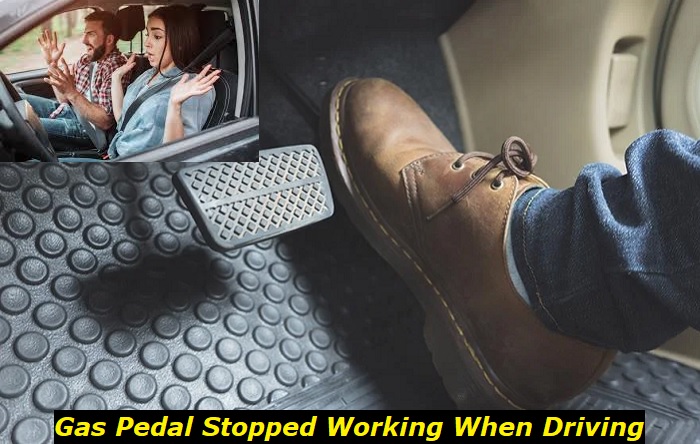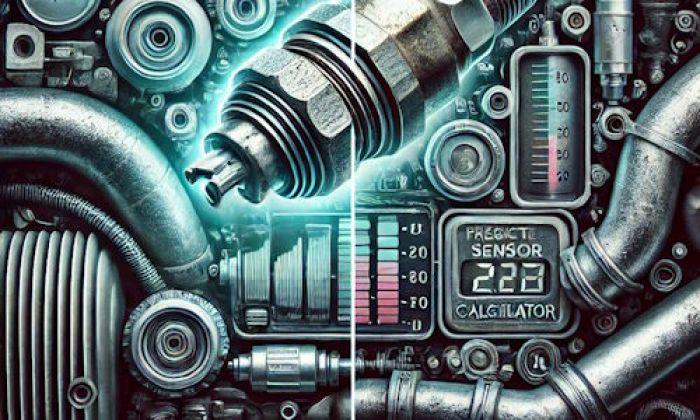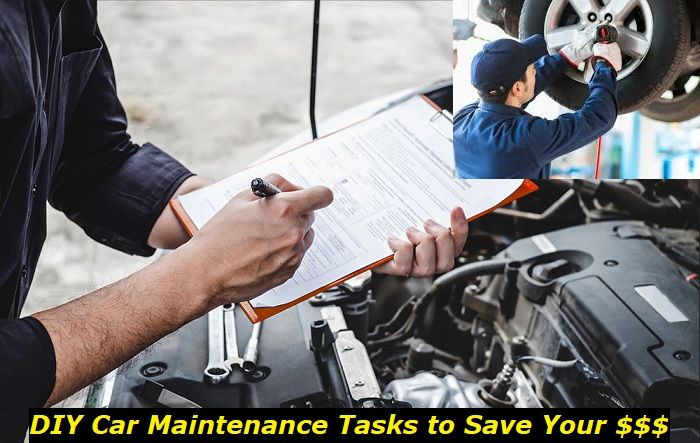The gas pedal suddenly stopping working while you are driving is a major cause of concern that you should immediately address. This will not only prevent you from going from point A to point B, but it can also be a precursor to a potential accident down the road and this usually spells parts failure in your vehicle.
Engine electronics problems highlights
- Level of urgency:Medium
- DIY inspection:Very complicated
- DIY repair:Impossible
- Cost of repair:$250 - $450
- Can you drive?Usually, yes
- Commonreasons:Electronic control modules failure, electrical contacts problems, wiring issues, software problems
- Ways to fix:Usually, professional inspection and repair needed only

What to Do in This Situation
Before anything else, see to it that you follow the following safety precaution to protect yourself from any untoward incidents:
- Pay attention to other road users in your immediate vicinity.
- Shift your gear into Neutral to cut the power going to the wheels.
- Gradually press the brakes to get to safe driving speeds.
- Alert other drivers and pedestrians that something is wrong with your car by activating your hazard lights.
- Carefully maneuver yourself off the safe side of the road.
- Once you have found an ideal spot to emergency park your vehicle, turn off its engine.
- Dial for emergency services to get your auto towed to the nearest repair shop.
Most Common Causes of Gas Pedal Failure While Driving
There are many possible causes of your gas pedal suddenly stopping its operation. Among the most obvious are your fuel tank running empty, so this is something that you should check first. However, when it comes to malfunctioning parts, here are the most common culprits that you may also want to check:
1. Mass Airflow Sensor and/or Oxygen Sensor Failure
The Mass Airflow Sensor (MAF) and Oxygen Sensor (O2 sensor) are two important components of a modern fuel injection system. The MAF is used to measure the amount of air entering the engine while the O2 sensor measures the amount of unburned oxygen in the exhaust stream.
These sensors send their data to the Engine Control Unit (ECU), which adjusts the fuel delivery accordingly. When these components fail, it can result in a variety of issues including poor acceleration, jerky movements, or even stalling.
If you experience any of these symptoms while driving with your gas pedal failing, there are several steps you can take to assess the source of the problem. Start by visually inspecting all parts related to your fuel delivery system, such as the MAF and O2 sensor. If you notice any signs of damage or corrosion, replace the affected parts immediately. Additionally, you can use a diagnostic code reader to check if any trouble codes related to these components are stored in your ECU's memory.
If either the MAF or O2 sensor is malfunctioning, it can cause an imbalance in air-fuel ratio that will lead to poor engine performance. In many cases, it is necessary to replace both sensors at the same time. It is also important to ensure that all other parts of your fuel delivery system are functioning properly prior to replacing either sensor. This includes checking for the other problems mentioned in this list.
In addition to replacing the faulty components, you should also make sure that your vehicle's engine is properly tuned and that all related parts are in good condition. This will help ensure optimum performance from your fuel delivery system and prevent future issues with your gas pedal. With proper maintenance and repair, you can enjoy a smooth drive even when your gas pedal fails.
2. Throttle Position Sensor Malfunction
The throttle position sensor (TPS) provides information about the current gas pedal angle and the rate at which the driver is increasing or decreasing engine speed. This information helps determine how much fuel needs to be burned to maintain the desired power output. The TPS also allows for better fuel efficiency since it can detect when acceleration or deceleration is needed and adjust accordingly.
When there is a problem with the throttle position sensor, it can directly result in issues such as poor performance, stalling, and the underlying issue here. The common causes of its malfunction are dirt or debris in the TPS circuitry, incorrect calibration, loose wiring connections, over-long travel, or a defective sensor.
To confirm the source of the problem, one can look for the said signs as well as irregular idle and fuel economy problems. Start your diagnosis by performing a manual check-up in the wiring connections and TPS components to ensure they are in good working condition.
Also remember to use relevant tools such as a multimeter, if necessary, to check whether or not there is a proper flow of electricity in and out of the throttle position sensor circuit.
If the source of the problem is identified as a faulty throttle position sensor, then its assembly will need to be replaced. However, if it's only dirt that is causing it to malfunction, see if it can still be saved through thorough cleaning.
Other related parts such as the gaskets and wirings should also be replaced if they show signs of damage when the TPS was removed. If these parts appear to be in good condition, then simply replacing the TPS should fix the problem.
3. Worn or Clogged Air and/or Fuel Filter
When either the air filter or fuel filter becomes clogged or worn, it can cause the gas pedal to fail while driving, leading to dangerous situations. To assess the root of this problem and provide an adequate solution, it is important to understand the most common causes of wear or clogging in both filters.
For the air filter, dirt and debris buildup is usually the ones to blame behind its failure. This means that over time, dust, pollen, and other particles accumulate on the filter's surface which then restricts airflow into the engine. As a result, less fuel can reach the combustion chamber which can lead to accelerated wear in certain components like the spark plug electrodes or even cause cylinder misfire during operation.
To diagnose this issue, a manual check-up can be done by inspecting the filter for any visible signs of dirt accumulation. If required, an airflow meter tool may also be used to measure the amount of air passing through the filter and compare it with manufacturer specifications.
Meanwhile, when it comes to fuel filters, clogging is usually caused by tiny particles in the fuel which build up over time on its surface. This buildup not only restricts fuel from reaching the cylinders but also prevents proper atomization of fuel droplets leading to inefficient combustion.
To identify if this is indeed occurring in the fuel filter, check the filter's surface for any visible signs of dirt. If required, a fuel pressure test can be performed to measure the amount of pressure being applied to the filter and compare it against manufacturer specifications.
Depending on the severity of wear or clogging, either one or both filters may need to be replaced to solve this issue. While cleaning the filters serves as a more economical alternative, a replacement is a more effective way to solve filter-related issues in most cases, especially if you are already noticing signs of wear on these parts.
4. Timing Belt is Off or Worn
There are several common signs of wear or misalignment with the timing belt that can indicate a need for repair or replacement. These include the underlying issue here as well as strange noises coming from the engine while driving, vibrations felt in the gas pedal when pressing down, and jerking or stuttering motions while accelerating.
A systematic diagnosis can be conducted to confirm any suspected issues with the timing belt, and this includes looking for visible cracks or excessive fraying along its length. If further confirmation is necessary, an automotive technician can use specialized tools such as a timing light to accurately measure and adjust the timing of the belt.
Once the source of the problem has been identified, an effective solution can be determined. In many cases, simply replacing the timing belt and its related components such as the tensioner, idler pulley or water pump is enough to solve any issues with gas pedal failure. If these parts are damaged due to poor calibration or overuse, they must be replaced to prevent further damage or malfunctions.
It may also be necessary to replace other miscellaneous engine components if they have sustained serious damage due to prolonged exposure to vibration or heat caused by a malfunctioning timing belt. Ultimately, an experienced automotive technician should be able to provide the best advice on how to properly repair any problems with a faulty timing belt system.
5. Clogged or Damaged Fuel Injectors
If you have experienced a Check Engine light, difficulty in starting the car, misfires, loss of engine power, stalling, and poor acceleration prior to the complete failure of your gas pedal, then you are most probably looking at issues in the fuel injectors. It's possible that one or more of your fuel injectors may have been clogged or damaged.
To confirm the cause of the problem, it is important to inspect any loose connections within the fuel-injection system and use tools such as code readers and vacuum testers to detect any issues with pressure levels or air/fuel mixtures. Inspect the injectors themselves for dirt buildup or damage.
Depending on the severity of the issue, repair options can involve replacing individual parts such as gaskets, seals, or O-rings; cleaning out dirt or other contaminants from inside the injectors; or replacing an entire fuel injector unit.
In some cases, a fuel-injector cleaning service can help reduce the chances of further damage and optimize engine performance. It is important to note that if any part of the fuel injection system is severely damaged or worn out, it should be replaced immediately to prevent additional complications from occurring.
Conclusion
There are many potential problems that can eventually lead to the gas pedal suddenly stopping its operation while you are driving, and the ones here are just some of the most common. More often than not, this is already an indication of major problems within your vehicle.
However, with the right course of action and repairs, you can mitigate the effects of this issue and get your car on the road safely again in no time.
About the authors
The CarAraC research team is composed of seasoned auto mechanics and automotive industry professionals, including individuals with advanced degrees and certifications in their field. Our team members boast prestigious credentials, reflecting their extensive knowledge and skills. These qualifications include: IMI: Institute of the Motor Industry, ASE-Certified Master Automobile Technicians; Coventry University, Graduate of MA in Automotive Journalism; Politecnico di Torino, Italy, MS Automotive Engineering; Ss. Cyril and Methodius University in Skopje, Mechanical University in Skopje; TOC Automotive College; DHA Suffa University, Department of Mechanical Engineering






Add comment